10 photographs that changed the world
These photographs have circled the globe, enkindling emotion; they stand as poignant – and sometimes bleak – reminders of moments passed. And if they continue to stand the test of time, they will almost certainly influence the way we think in the future.
“Photography takes an instant out of time, altering life by holding it still”.
– Dorothea Lange
1942

1942 – Ansel Adams Teton and the Snake River. Photograph: Ansel Adams
Taken in Wyoming’s Grand Teton National Park, Adams’ photograph was a pioneering example of photography being used to make a statement about the importance of the natural world. A tireless advocate of environmental awareness, Adams was disturbed by the ravaging effect that so-called ‘progress’ was having on the environment – at a time when such thinking was not yet prevalent.
Like our generation’s much-venerated David Attenborough, Adams recognised that by capturing the beauty of the planet, he could invite people to see it as he did, thus better safeguarding the world that he loved. The photograph returned to the limelight in 1977, when it was chosen as one of the 115 images that made up the Voyager Golden Record. These images, which were sent in to space on the Voyager spacecraft, were designed to convey images of the planet and human life to any inquisitive alien races.
1945

1945 – Atomic bomb ‘Little Boy’ is dropped on Hiroshima. Photograph: Getty Images
The photograph may show the immense mushroom cloud, but is equally powerful because of what is unseen: the 70,000 lives that were extinguished in the bomb’s initial blast (the final death toll may have been up to 140,000). A frightening image of the misapplication of intellectual, scientific and technological resources, this photograph has been seared in to global memory as a bleak reminder of man’s capability for self-destruction. Appropriately, Julius Robert Oppenheimer, the director of America’s wartime nuclear project, famously remarked that an earlier nuclear test had brought to mind a particular line of Hindu scripture: “Now I am become Death, the destroyer of worlds”.
1945

1945 – Kissing the war goodbye: An American sailor kisses a nurse in Times Square, New York, on VJ Day (Victory in Japan). Photograph: The LIFE Picture Collection.
This photograph tells a very different story of the end of the Second World War. Photographer Alfred Eisenstaedt took to the streets of New York to capture the jubilation that followed President Harry S. Truman’s announcement that victory had been achieved in Japan. Victory in Europe had been achieved by the 8th May 1945, but with many US servicemen still fighting in the pacific, the 2nd September 1945 marked the definitive end to America’s war.
A week after it was taken, the photograph was featured on the cover of Life magazine, propelling it to world-wide fame. It was helped on its way by the stark contrast between the nurse’s all-white outfit and the sailors dark uniform – something that made the image all the more striking.
1960
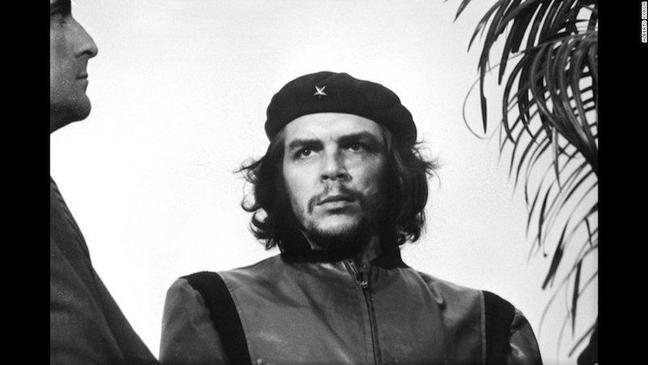
1960 – The iconic photo of Marxist revolutionary ‘Che’ Guevara. Photograph: Alberto Korda
Alberto Korda’s photograph of Ernesto ‘Che’ Guevara has made the revolutionary one of the most identifiable figures in the world. Taken at the memorial service for the victims of the La Coubre incident, the photograph seems to capture a steely determination in Guevara’s eyes – something that surely helped the image to acquire its mythic standing.
La Coubre, a French freighter carrying Belgian munitions, exploded in Havana’s harbour, killing up to 100 sailors, dockworkers and military personnel. Fidel Castro was quick to claim that the explosion was a deliberate act of US sabotage. The photograph has been reproduced worldwide, appearing on countless t-shirts, posters and artworks as an icon of revolution and countercultural thought.
1961

1961 – Hans Conrad Schumann defects to West Germany during the construction of the the Berlin Wall. Photograph: Peter Leibing
19 year old Hans Conrad Schumann became the unwitting symbol of the Free World when he leapt to freedom on the third day of the Berlin Wall’s construction. His defection would be replicated by around 2,100 East German soldiers and police. Not only representing resistance against segregation, the photo is made all the more poignant by the fact that Schumann was photographed throwing his machine gun to the floor – a powerful symbol of disarmament and a welcome contrast to bristling military tensions.
1968
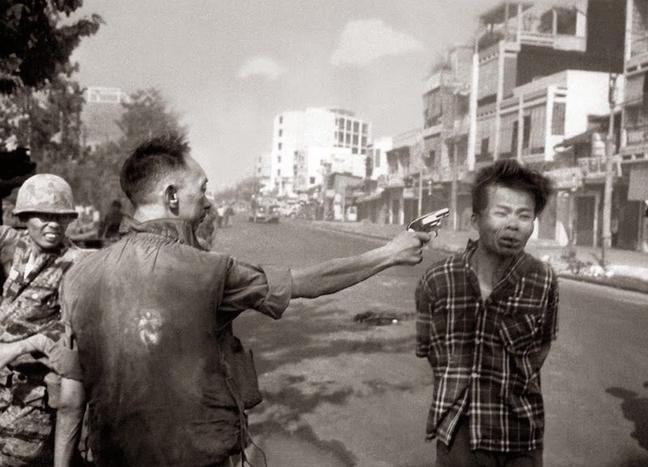
Feb 1, 1968 – South Vietnam’s chief of National Police, Nguyen Ngoc Loan, executes a Viet Cong operative in Ho Chi Minh City (formerly Saigon). Photograph: Getty Images
Occurring alongside an explosion in the reach and popularity of TV news, the Vietnam War was dubbed the first ‘television war’. Despite being thousands of miles away, the American public were suddenly onlookers; the war – or at least images of it – was brought in to their living rooms on the nightly news. A moment that was also captured on film, this Pulitzer Prize-winning photograph gained worldwide press attention as a symbol of the war’s unrelenting violence, and would become one of the most prominent images to fuel anti-war sentiment at home. The war’s unpopularity contributed significantly to America’s eventual withdrawal from Vietnam, an era-ending moment that was marked by an unprecedented failure in US foreign policy.
1969

1969 – Man on the Moon: Neil Armstrong’s photo of fellow astronaut ‘Buzz’ Aldrin. Photograph: The LIFE picture collection/Getty Images
Bringing an end to the ‘Space Race’ between the US and the Soviet Union, the first moon landing was seen as a testament to aspiration, innovation and pioneering spirit. Putting men on the moon changed mankind’s relationship with space; until the Apollo 11 mission, everything beyond Earth was intangible. In 1999, it was revealed that President Richard Nixon had asked his speech writer to prepare a condolence piece for him to read in the event of the astronauts becoming marooned on the moon.
1989
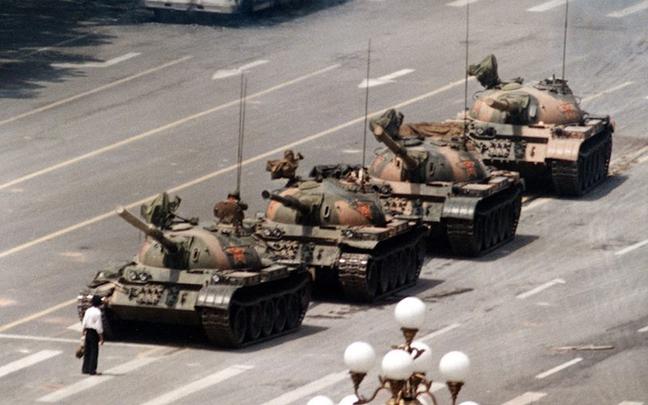
1989 – An unknown man blocks the path of tanks in Tiananmen Square, China. Photograph: Getty Images
A famously allegorical image, this photograph struck a chord for its David-and-Goliath-like image of defiance. The year is 1989, and although the Soviet Union’s collapse is only months away, the photo is emblematic of an era that was defined by the muscle-flexing of global superpowers. A reminder of how a simple act can have a Herculean effect, the photograph made it to the other side of the world, where Time magazine reported that it ‘revived the world’s image of courage.’
1990
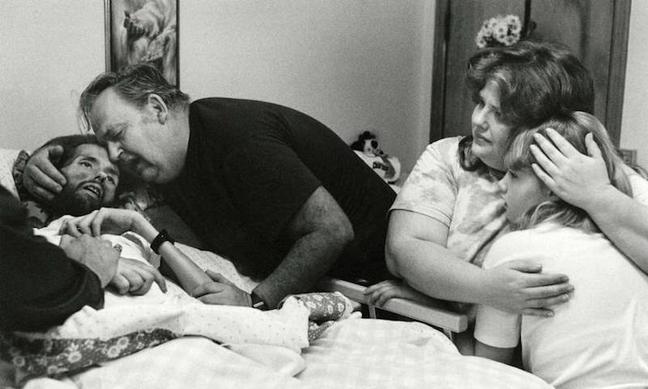
1990 – Wasted by illness, AIDS patient David Kirby is surrounded by family on his deathbed. Photograph: Therese Frare
Therese Frare’s photograph of David Kirby was dubbed the ‘photo that changed the face of AIDS’. Coming to the foreground in the 1980’s, AIDS appeared during an era that was suffused with paranoia. In America, the world seemed a distinctly uncertain place: fear of Communism – particularly the reds under the bed concept of the McCarthy era – was rife, the threat of nuclear apocalypse all too real. Within this political landscape, AIDS was heavily stigmatised, largely misunderstood and even seen by some as a symptom of America’s decay from within. Capturing the anguish of the entire Kirby family, Frare’s photograph helped to refocus the public mind on AIDS tragic human toll.
1993
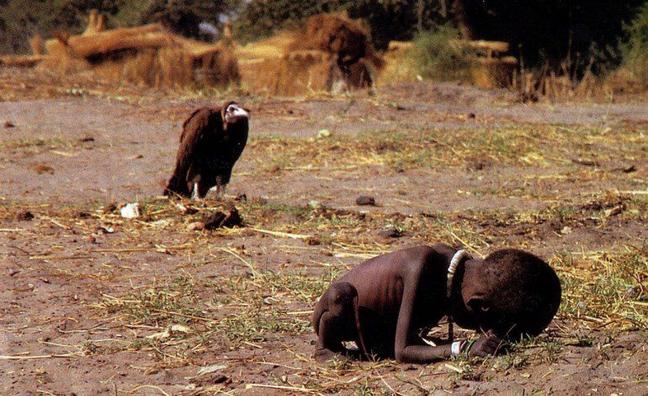
1993 – Kevin Carter’s photo documents a famine-stricken South Sudan, showing a vulture stalking a starving child. Photograph: Kevin Carter
While African nations often suffer from generalisations – not least the lumping together of the continent’s 54 countries and countless cultures – it is undeniable that poverty is rife, and in some places, extreme. Kevin Carter’s bleak, Pulitzer Prize-winning photograph appeared in the New York Times, helping to increase Western awareness of the dire situation in South Sudan. The image is important for another reason, however. Many distressed people wrote to the newspaper asking about the child’s fate, and Carter came under heavy criticism for not doing more to help. With this in mind, the shot begins to look like an emblem of media culture, highlighting the problematic nature of reporting. Both the media and the onlooker take on the role of spectator, voyeur even, but no physical intervention is made.

Become a Gentleman’s Journal Member?
Like the Gentleman’s Journal? Why not join the Clubhouse, a special kind of private club where members receive offers and experiences from hand-picked, premium brands. You will also receive invites to exclusive events, the quarterly print magazine delivered directly to your door and your own membership card.


